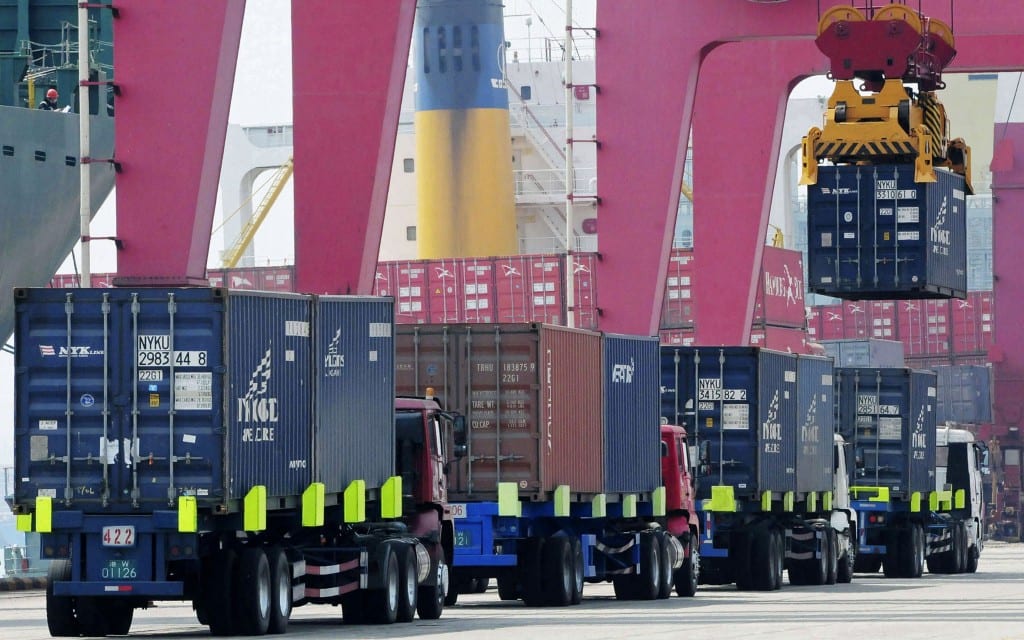

China’s trade slumped in January due to weak global demand and holiday effects, casting new shadow over the outlook of the world’s second-largest economy, data from the General Administration of Customs showed yesterday.
Exports shrank 6.6 percent from a year earlier to 1.14 trillion yuan (US$174.6 billion) in January, ending a one-month-long growth stream of 2.3 percent in December. Imports contracted 14.4 percent to 737.5 billion yuan, much widening from the loss of 4 percent a month earlier.
As a result, January’s trade surplus shot to 406.2 billion yuan, a record high that was up 12.2 percent year on year and more than December’s surplus of 382.1 billion yuan.
“China’s exports fell sharply, suggesting weak global demand,” said Liu Ligang, chief economist at Australia & New Zealand Banking Group. “The decrease of imports was in part due to still low commodity prices.”
Liu noted the earlier timing of the Chinese New Year in 2016 compared with 2015 has also distorted the annual growth rates as traders tended to frontload their shipments in December when exports staged a remarkable rebound.
Wendy Chen, a research analyst at Nomura, said the trade data, together with other indicators, suggested growth momentum in China weakened further in January.
“As China’s retail sales remained stable, the trade slump mainly reflected weakening investment demand, possibly from weaker property investment and measures to reduce overcapacity,” Chen said.
China’s economy had a “bumpy start” this year as data for January stayed weak due to the holiday effects and the extremely cold weather. Factories continued to report contracted activities while service providers also saw their business less robust.
China’s growth momentum has kept slowing as the country entered the state of “new normal,” illustrated by moderating growth rate but better growth quality.
China’s gross domestic product grew 6.8 percent in the fourth quarter of last year, and ended 2015 with a rate of 6.9 percent, the slowest annual expansion in a quarter of a century.
In January, China’s trade decreased 9.8 percent to 1.88 trillion yuan, the Customs data showed. It deteriorated further from last year’s contraction of 7 percent, when China missed its government target of a 6-percent increase.
The European Union remained China’s largest trading partner last month, although its trade with China declined 9.9 percent to 290.3 billion yuan. It was followed by the United States and the ASEAN countries, which shipped goods worth 269.8 billion yuan and 234.2 billion yuan respectively, down 9.9 percent and 10.8 percent.
Foreign trade involving China’s private firms delivered the best performance by increasing 1.1 percent during the period, while foreign traders said their business lost 14.3percent and state-owned traders reported a contraction of 21.9 percent.
Shanghai’s trade retreated 6.1 percent to 219.4 billion yuan last month.